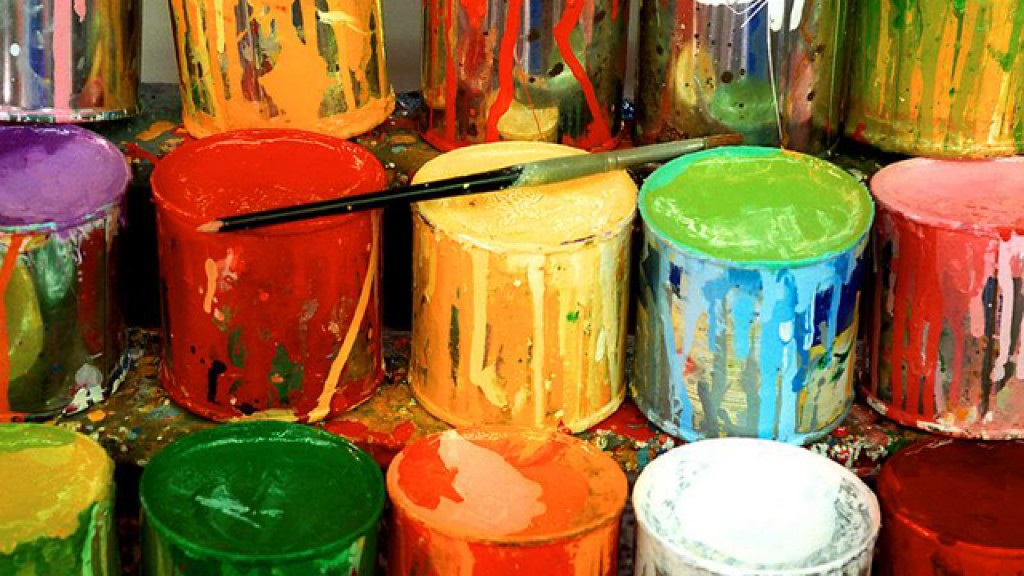Resources - Case study
New Life from Old Paint

With the deadline for round 2 of the TSB’s Designs for a Circular Economy competition, round 1 winner Chris Sherwin, Head of Sustainability at Seymourpowell, talks us through their entry.
Take a quick look in your garage or shed and I’ll bet you find some old tins of paint. You may even find the 17 dried up or half empty tins the average UK household is estimated to have. As much as 50 million litres of paint are believed to go unused each year, adding to the UK’s landfill burden, affecting other materials recyclability, clogging up storage in our ever shrinking households.
That’s not to mention the invisible, but valuable resource being lost here too. Paint ingredients like Titanium Dioxide and petroleum-derived lattices are expensive to source (TiO2 alone has seen a 50% plus price rise in the last 3 years), increasingly scarce and have high carbon footprints.
Clearly the paint category would benefit from some resource efficient thinking and ‘circular’ design. Our Technology Strategy Board (TSB) funded ‘New Design for the Circular Economy’ (NDCE) project – aptly titled ‘Project Recover’ – aims to do just that. To their credit, two of the three project partners, Akzo Nobel Paints and Newlife Paints are already active at the cutting edge of new systems to collect, recycle and reuse paint, working together to turn it into an as-new product for resale directly to the market.
Akzo Nobel works closely with Community RePaint to collect and reuse over 200,000 litres of ‘old’ paint for use on good causes and community projects. They also support Newlife Paints, a fledgling business, who quite miraculously turn old paint into new. You can even buy Newlife’s recycled paint in selected B&Q stores.
Yet there remain major challenges in scaling and speeding up paint recycling and reuse. For example, closing-the-loop to the collect such dispersed, unused paint can be a real logistical challenge; while a particular design challenge is finding an efficient and effective way to decant used paint from old tins for reprocessing, after they are collected.
As the third project partner, Seymourpowell bring design and innovation expertise to these particular challenges. I was personally thrilled to see designers placed centrally in the TSB competition, and I’m convinced we can bring something to the Circular Economy party. There’s a real sense of circular design being something of a greenfield and that we are as much shaping the rules of the game, as solving a particular problem in these projects.
Our final solution may not yet be clear, but projecting forward, I’d love it if we played a small part in helping make ‘preloved’ paint a mainstream and commercial success. More certain though is the value of the TSB funding and the RSA Great Recovery support. Without it, I doubt we’d be coming together in quite this way, as no one actor within this paint system could possibly tackle the problems alone.
The deadline for round 2 of the TSB NDCE competition is almost upon us and I’d urge you to take a look. Innovation competitions like this allow the sort of experiments that don’t always come through in the traditional designer-client relationship, so it a rare chance to do something both innovative and meaingful. The prize for us getting it right is that sweet spot of better solutions for people, profit and planet – and in the process helping designing-out 60,000 tons of paint waste from UK landfills,
Chris Sherwin, Head of Sustainability, Seymourpowell
http://blog.seymourpowell.com





